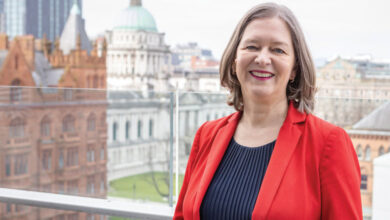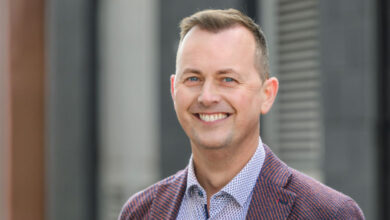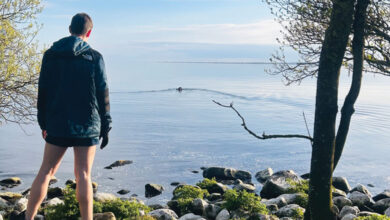Social
The draft Investment Strategy’s ‘social’ theme is a catch-all term for projects designed to improve quality of life, which do not fall into the education and health categories. Specifically, this incorporates urban regeneration, social housing, and investments in culture and leisure.
Potential to change communities
The regeneration of towns and cities, it notes, can indirectly make Northern Ireland more attractive to visiting inward investors, as well as its obvious benefits for builders and retailers.
While not specifically mentioned, the links between public safety and well-being and regeneration allude to the ‘broken windows’ theory developed by American sociologists James Wilson and George Kelling in 1982. The academics concluded that making small improvements in an area’s appearance and fixing faults quickly can stop a downward spiral of vandalism and other social problems.
The references to the improving quality of life in the most deprived neighbourhoods tie in with the existing Neighbourhood Renewal and forthcoming Social Investment Fund programmes (see issue 54, pages 16-17). These neighbourhoods are often characterised as the ‘rough areas’ of Belfast and Derry but they also include outlying rural areas with relatively few jobs which therefore leads to young people migrating elsewhere e.g. around Castlederg, Crossmaglen and Bushmills.
Investment to tackle fuel poverty will include the boiler replacement scheme but campaigners are continuing to press for a more ambitious Green New Deal. The roll-out of 27 ‘jobs and benefits offices’ is helping people to find advice on employment and welfare in one place.
The draft strategy says that investment in culture, arts and leisure makes “significant and material contributions” to the economy, health, education and social inclusion. The stadium redevelopment plans, though, are being taken forward after the more ambitious Maze stadium site was abandoned.
Improving museums and theatres helps to create “a strong sense of place and belonging” which in turn makes Northern Ireland “a welcoming and interesting place to visit.” Culture Minister Carál Ní Chuilín has emphasised the need to invest in smaller arts projects and sport in local communities, which explains the strong support for them in the document. The long-term, and potentially lifelong, health benefits of getting involved in local sport and art are highlighted.
| £ million | 2011-2015 | 2015-2021 | Total |
| Regeneration | 215 | 270 | 485 |
| Housing | 758 | 855 | 1,613 |
| Welfare reform | 8 | 12 | 20 |
| Culture, arts and sport | 149 | 208 | 357 |
| All networks | 1,130 | 1,345 | 2,475 |
Key projects from 2008-2011
Victoria Square is praised as a major achievement in the last Assembly, having been recognised as the Urban Regeneration Initiative of the Year in 2008. Major schemes have also been completed in the rest of Belfast city centre, Newcastle, Lurgan, Portadown, Armagh, Derry, Coleraine, Kilkeel and Downpatrick. Footfall in Newcastle town centre increased by 300 per cent after its regeneration.
The construction of the Obel Tower and Lanyon Towers in Belfast are also highlighted, although the document does not mention that both developments are mainly vacant.
£3 million has also been invested in restoring Crumlin Road gaol, which closed in 1996 and is being refurbished as a tourist attraction, office development and conference centre. The Maze or Long Kesh site (abbreviated to MLK) is identified as a “key strategic site for regional economic and social benefit” with the development corporation taking forward the ‘conflict resolution centre’ and base for the Royal Ulster Agricultural Society show.
Around 5,000 social homes had been built over the last Assembly term. The Ulster Museum, Crescent Arts Centre, Lyric Theatre, Metropolitan Arts Centre (MAC) and Public Record Office redevelopments also stand out.
Higher priority for culture and sport
Support for Derry’s City of Culture bid (a “golden opportunity”) is outlined in considerable detail, including the city’s single regeneration plan: ‘One City, One Plan, One Voice’. The year will be based on two themes: “purposeful enquiry” and “joyous celebration”. Ebrington’s parade ground is larger than Trafalgar Square and can accommodate 15,000 spectators.
Back in Belfast, the Royal Exchange development forms part of an ongoing regeneration of Belfast city centre. The Skainos project on the Lower Newtownards Road is being taken forward by the Methodist East Belfast Mission and includes housing, social enterprise units and a ‘vertical garden’.
Public realm schemes, to improve the appearance of urban areas, are planned for five deprived areas in Belfast and 11 towns. Many of the commitments are continuations of existing policies e.g. warm homes and building 8,000 social and affordable homes between 2011 and 2015.
Subject to funding, the second phase of the strategy would “accelerate deferred investment” in the Ulster American Folk Park, the Ulster Folk and Transport Museum, inland waterways, local arts and sport, and stadium safety.






